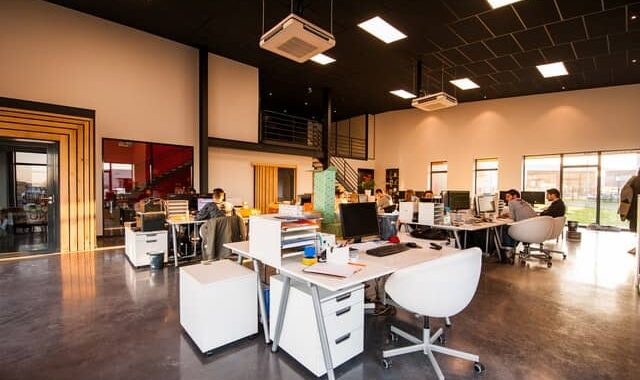
8 min
How a Positive Workplace Experience Can Revitalize your Organization
Written by
As the world transitions from the pandemic, and begins to resume normal operations, companies and organizations have evolved to offer and innovate more for their employees. From work-life balance to onboarding, companies have taken a holistic approach to improving the quality of their employees’ well-being. To do this, companies have to motivate, retain, and improve employee engagement ultimately resulting in a positive workplace experience.
Related articles:
Employee Experience: Everything You Need to Know
Digital Assistant: A Powerful Tool in the Workplace
What is Workplace Experience and How Can it Help Organizations?
Let’s look at the workplace first and see how it has changed before analyzing the workplace experience as a whole.
Traditionally, workplaces have been offices, buildings, or communal places where employees collectively work under one roof, but with the advancements due to the pandemic, workplaces have now expanded, including bedrooms, home offices, and even kitchens. Paired with the fact that these workplace environments are here to stay, as 74% of CFOs plan to shift employees permanently to work-from-home status, the workplace is progressing dramatically especially concerning human resources.
Now examining workplace experience, is it just the experience an employee has in their daily work? Does it include onboarding? What about their life outside of work? How does experience play a role and what makes it so important that organizations nail it, so they can stand out and gain a competitive advantage in retention?
Workplace Experience
Workplace experience can be defined in two ways, business-centric or employee-centric. From the business perspective, workplace experience is the strategic method of creating and fostering an environment that allows employees to do their best work. From an employee perspective, workplace experience is the emotions and feelings said employee carries throughout their workday due to the environment and its associated effects. Workplace experience is directly related to employee experience.
Some workplace environments can create varying effects on employees, which could affect their quality of work, especially for newer generations such as millennials as they are more concerned with working in a healthy environment. The best way to create a positive workplace environment and experience is to look at how the workplace experience is made up to increase job satisfaction.
1. Surroundings
2. People / Relationships
3. Systems
Surroundings
This is where the employee is, and how their natural surroundings can impact their experience. Working in loud environments or super quiet environments can adversely affect different people and create a negative workplace experience. It’s important to know in what environment employees prefer to make employees feel empowered and engaged in work.
People
People simply refer to an employee’s co-workers and the people they interact with on a day-to-day basis at work. It relates to the company culture, speaks to healthy workplaces, and can attract or deter top talent from working at your organization. Building an enhanced company culture that speaks to the values and skills of the organization’s mission will weed out the wrong people for your organization. This way, the remaining employees will be well-rounded, share similar values, and will be able to sync well with their co-workers creating a great culture to have professional growth, and making businesses having a higher employee retention rate.
Systems
Finally, systems are the technology used by employees for work purposes. With the advancements sparked by the pandemic, companies are using more technology than ever before. While this can be a good thing, understanding limits and necessities are very important. Having too much disconnected technology can cause employees to be overwhelmed which leads to disengagement and may even reinforce a silo-type atmosphere.
Workplace Experience Examples
Now let’s look at an example of a workplace experience, say a conference with a team across the world, and see how these factors can either positively or negatively impact the work environment.
Companies often work with people across the globe and could require a heavy setup regarding the conference room. From setting up a speaker system, to multiple mics, and high-quality acoustic paneling, a lot goes into creating a suitable environment for a video conference. This is where the surroundings come into play. Either digitally, or in person, the surrounding environment will have an impact, whether it be satisfaction or dissatisfaction. This is why organizations rely on systems to deliver a best-in-class experience for all workers. Not only should the systems be highly functioning, but they should also be easy to access when needed and user-friendly or intuitive to use.
The experience of the video conference doesn’t end in the conference room. It extends to the employees’ personal workspace, how they can access the tools they need, how they interact with other people, and how other people engage with the conference room. This is essentially a closed loop and ensuring one aspect of it doesn’t falter means everything else should remain intact to have a great workplace.
Why is Workplace Experience so Important?
As attrition rates have soared, and employees are rapidly quitting their jobs (a phenomenon coined as The Great Resignation) organizations are struggling to attract, retain and maintain top talent. One of the big factors is due to workplace experience. As digitalization due to the pandemic occurred, companies struggled to manage both a digital and physical workplace experience.
This means that not only is workplace experience important for your employees and their productivity, but it directly impacts the bottom line, as HR needs to spend more time recruiting, hiring, and onboarding talent, just for them to leave shortly after.
If companies want to retain employees and have them be engaged, motivated, and enjoy their work, the workplace experience must be satisfactory. Companies need to implement systems and techniques that will allow employees to feel appreciated and recognized to even be considered to be one of the best companies to work for.
The Difference Between Digital and Physical Workplace Experience
So, what is the real difference between a digital and physical workplace? Of course, there is the fact that your surroundings are completely different, but moreover, with digital workplaces, the line between home and work is often blurred. This means, creating a digital workplace experience not only means improving the “9-5” work schedule, but also finding ways to improve the quality of life for employees outside this standard.
How Technology can Improve Workplace Experience
Technology in the workplace should be used to complement the workstyle of your employees, and not control it. It can be used to automate redundant tasks; provision supplies and much more. Ultimately, technology shouldn’t be the center point of the workplace, but rather a helpful “sidekick”. In fact, it’s important that when you implement new technology into the workplace, that performers be at the heart of these decisions to create a culture to improve the employee life cycle.
Employees have learned to adapt to the work-from-home lifestyle, but there are still gaps in this method that technology can use to improve productivity, collaboration, and motivation. Software that delivers a personalized experience can give employees a positive work experience and make them more engaged.
How to Continually Improve on your Workplace Experience
As with all new systems and techniques in place, it is imperative that companies continually monitor, iterate, and improve upon their existing strategies in order to get the best results. As the needs of employees emerge, companies should keep count on how workplace experiences could best impact employee productivity.
One way to improve workplace experience is to start off with communication. This could be in the form of monthly or quarterly meetings, feedback forms/surveys, or even through company messaging networks like Slack or Teams. Whatever it is, options are always good, but remember to keep it clean and not cluttered as this might increase employees of being unhappy.
But don’t stop there!
Once you’ve given the option to receive feedback, let your employees know the difference between good and bad recommendations. This will help HR know that they are getting quality information that they may actually be able to implement. Finally, as always, do something with the feedback. We’ve seen countless times when feedback falls on deaf ears and nothing gets changed. This can be a major deterrent to setting a positive workplace experience as employees feel like their opinion isn’t valued and the company won’t go the extra mile to help the employee lifecycle.
Conclusion
With the dynamic nature of the workplace experience, whether that be in-person, remote or hybrid, companies need to find ways for employees to engage, be productive, and be motivated to work. Through analyzing the nature of the work, and the surrounding environment for employees both physically and mentally, giving the necessary tools to employees, and creating a positive workplace experience will revitalize your organization. This will also bring a huge impact on organizational culture and increase the chances to foster a healthy environment for everyone.




